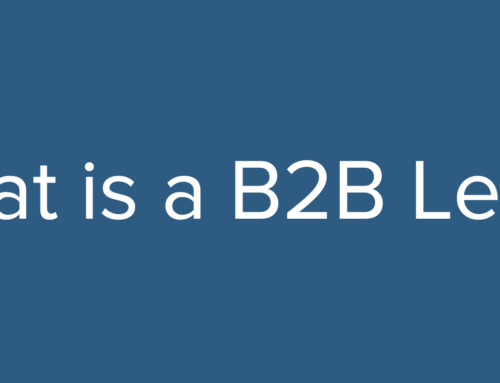Webinars are one of the most effective demand generation tools when done right. Why is that true? It is because you get a room full (virtually) of qualified prospects who want to be there to hear and see the content provided on a topic which you control. They are a captive, qualified audience. That is not an easy thing to accomplish as an in-person event. Of course, the part of that original statement that is most important is “when done right.” Let’s take a look at some of ways to increase your webinar attendance using best practices that you should consider to create a webinar event that will product the best results.
Create an Educational Opportunity instead of a Sales Pitch
Your sales team may view a webinar as the perfect venue for selling. If that view prevails, you are likely to be extremely disappointed. The first goal of any webinar should be to educate prospects. Use your knowledge of your prospect’s pain points and needs to deliver educational content such as:
- insight into industry changes
- assistance in avoiding costly mistakes
- best practices on creating a path to a solution
- understanding of key technologies that will drive decisions
- case studies that demonstrate how similar customers created valuable solutions
Make the Title/Abstract Count
Ensure your title gives prospects a reason to pay attention. Your title should evoke curiosity, create a reason NOT to miss the webinar, and/or clearly relate the value of the webinar. For example, a title like “The 5 Myths … “ is going to evoke some curiosity. Who does not want to make sure they aren’t buying into some myth? A title like “The 2 Most Important Reasons to … “ is going to grab someone who surely wants to know those “2 most important things.” A title like “Learn how to … .” conveys immediately that someone is going to get something from the webinar.
The abstract should also be viewed as an opportunity to engage your audience. Don’t just list the speakers and summarize the topic. State what people will learn. State what they will leave knowing. Write the abstract from the view of the prospect that is going to give you an hour of their time. Follow the WIIFM (What’s In It For Me) process and state that clearly.
Choose Your Speakers Wisely
It may seem like a picky point, but you simply cannot promote speakers that have “marketing” or “sales” in their titles. Prospects that receive those webinar promotions just focus in on those speaker titles and assume that the topic is a ruse for a sales pitch. What speakers work best? Try:
- Product managers
- Independent third-party consultants/specialists
- Industry authors/speakers
- Customers (who are willing to share their case study)
Use the Registration Form for a Purpose
Regardless of whether you build your own registration or are using a third-party (e.g., media partner) to build your registration, take advantage of that process to ask one or two questions that demonstrate your desire to engage and educate your audience. Blatant questions that pre-qualify people should be tossed aside (e.g., Do you want to speak to a sales person?”, “Do you have a current need … ?”) in favor of questions that demonstrate you are seeking to better education your audience and better understand their needs. Consider questions like:
- What would you specifically like to learn from this webinar?
- I am attending this webinar to (a) learn for myself, (b) gather information for my organization for an upcoming project, (c) urgently need this information for my organization to select a solution.
- What is a specific question we can answer for you on this topic?
Those are just examples, but you can see the intention. While long-form answers are harder to digest (two of the examples allow free-form answers), you will learn more about the intentions of the prospect registering. The attendee will likely share more, and you can even tailor the presentation to ensure you are on target. If their question is too disruptive to the webinar you can always answer them offline.
Combine Topic and Case Study Where Possible
Customers are people and they connect with stories about how real people solved their problems. It is always tempting to present an educational topic immediately with your own pitch about your products and solutions. However, you will find the best combination is to lead with a great educational topic followed by one or two specific examples of how a customer worked through the process of selecting and implementing the best solution and the results they achieved.
Get Your Audience Involved to Learn More
You have a golden opportunity to learn more about your audience during the webinar. While this is not a traditional focus group, you can actually create specific opportunities to get valuable information through audience interaction. A few possibilities include:
- Conducting one or two poll questions during the presentation. The audience can see the immediate feedback and the speaker can play off of the results to further the discussion. At the same time, the answers are saved for each registrant for review at a later date. (One caveat – don’t ask “sales” questions like “who has an upcoming project?”)
- Ask people (more than once) to type in questions (in the Q&A box) during the presentation. A savvy speaker can keep an eye on this or have a colleague track these and prompt the speaker during the presentation to address key questions.
- Seed the Q&A portion of your event. You should leave time for Q&A and be prepared to have a few questions teed up that would be natural questions from the audience on the topic. This is a good way to ask questions that lead to your unique value proposition without this being so evident.
Enjoy the Success
Follow these basic best practices and begin enjoying greater success in getting the right audience to your webinars. If you can consistently prepare for the webinar by maintaining your prospect’s viewpoint, you will get what you want in the end. Increase Your Webinar Attendance using Best Practices






